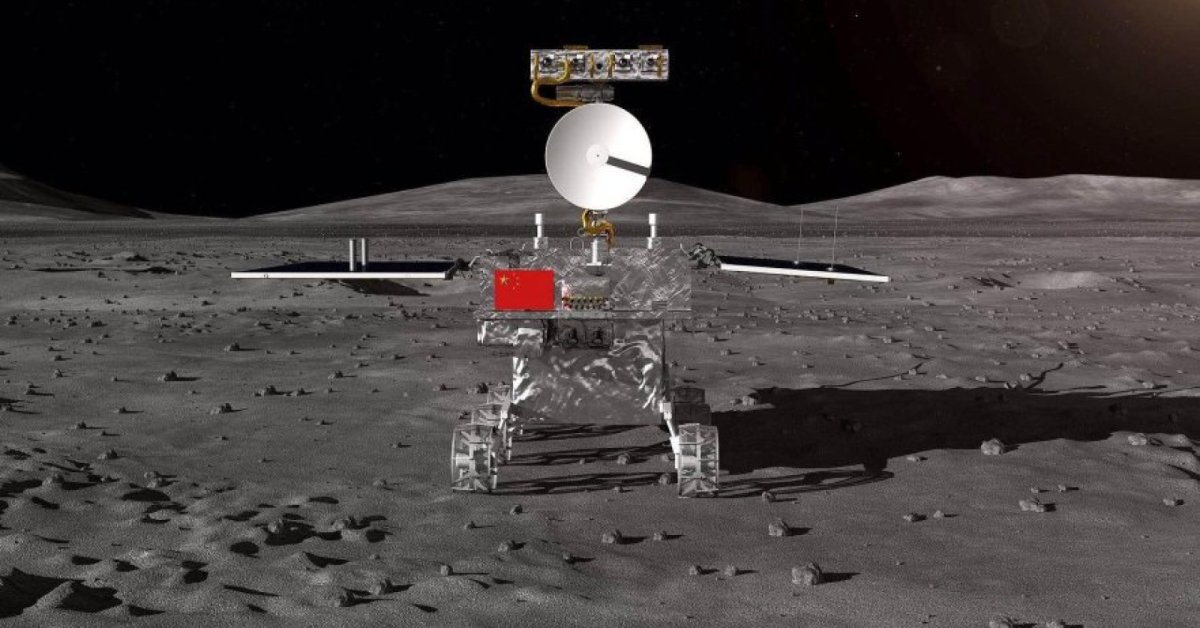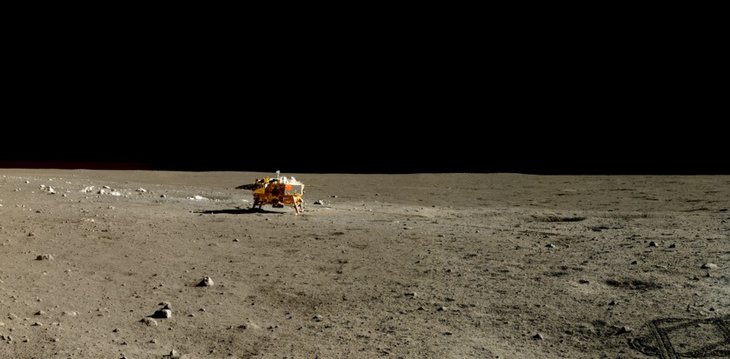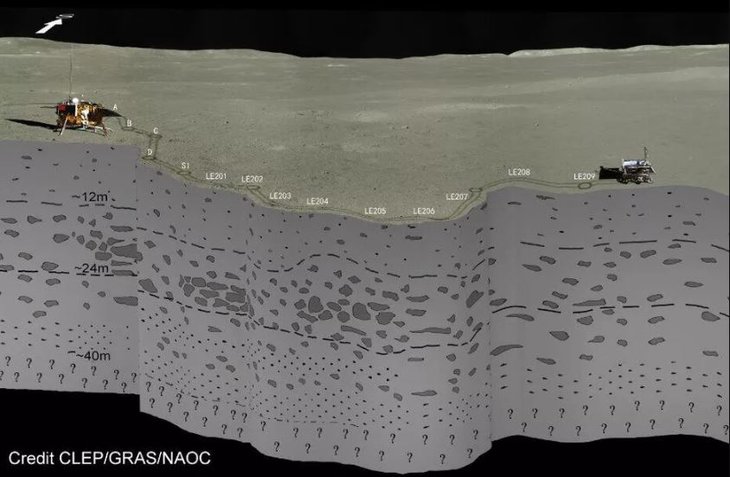China's Chang'e-4 Discovered 3 Layers Under The Surface Of The Moon's Dark Side
Dhir Acharya - Feb 27, 2020

Since 2019, the Chang'e-4 has explored the far side of the Moon, sending scientists valuable data. And now, here comes another new discovery.
- Scientists Want To Send 6.7 Million Samples, Including Sperm, To The Moon
- Russia Will Build A Lunar Space Station With China Because It's Done With NASA
- China’s Chang’e-5 Mission Returns To Earth With Moon Samples
Right now, the Chang’e-4 is the only one exploring the dark side of the moon, which must be so lonely; however, it means there’s so much opportunity there too. Over the past year, the lander and the rover have revealed the secrets of the other side of the moon. The Yutu-2 rover has discovered a gel-like substance and shot pictures of the lunar surface. However, it has also been investigating what’s beneath.

Using its penetrating radar, the rover can send out pulses of radio waves through the lunar surface, and then they are bounced back, giving us a picture of what the underworld of the moon is like.
Researchers from the Chinese Academy of Science, in collaboration with researchers from institutes in China and Italy, have provided the first details of the moon’s dark side’s subsurface. The research team mapped the world under the surface to as deep as 40 meters, which reveals the geologic features.

Being smashed by space rocks over a course of 4.5 billion years, the lunar surface is full of craters. The South Pole-Aitken basin is a good example of that, providing information on the cosmic collision and revealing further about the minerals inside.
As shown by Chang’e-4’s radar, the crater has three different layers. The first one is the lunar regolith, filled with rocks and extending to about 12 meters below the surface. Under that is a layer of larger rocks as well as boulders that might have been there due to an impact event. And the last layer that’s about 24 meters down may contain larger rocks and finer dust.

The researchers believe that these layers were formed during the galaxy’s formative years. It’s possible that the moon was struck a lot, making material ejected from the surface then settle back. That may have created the layering observed now, each impact could cause a different distribution of soil and rock.
On the near side of the Moon, China’s Chang’e-3 couldn’t reach as deep as the Chang’e-4 has done. The Chinese Academy of Sciences’ National Astronomical Observatories’ deputy director-general Li Chunlai, also the author of the new paper, said in a press release that:

This suggests that the compositions of soil and rock at the two landing sites are different.
China is looking to launch another explorer to the moon by year-end, the Chang’e-5, which is expected to retrieve samples of the fine soil forming the lunar surface and bring them back to Earth.
>>> Your USB Charger Is More Powerful Than The Apollo 11 Guidance Computer
Featured Stories

Features - Jul 01, 2025
What Are The Fastest Passenger Vehicles Ever Created?

Features - Jun 25, 2025
Japan Hydrogen Breakthrough: Scientists Crack the Clean Energy Code with...

ICT News - Jun 25, 2025
AI Intimidation Tactics: CEOs Turn Flawed Technology Into Employee Fear Machine

Review - Jun 25, 2025
Windows 11 Problems: Is Microsoft's "Best" OS Actually Getting Worse?

Features - Jun 22, 2025
Telegram Founder Pavel Durov Plans to Split $14 Billion Fortune Among 106 Children

ICT News - Jun 22, 2025
Neuralink Telepathy Chip Enables Quadriplegic Rob Greiner to Control Games with...

Features - Jun 21, 2025
This Over $100 Bottle Has Nothing But Fresh Air Inside

Features - Jun 18, 2025
Best Mobile VPN Apps for Gaming 2025: Complete Guide

Features - Jun 18, 2025
A Math Formula Tells Us How Long Everything Will Live

Features - Jun 16, 2025
Comments
Sort by Newest | Popular